Friday 12th January 2024, 10:39am
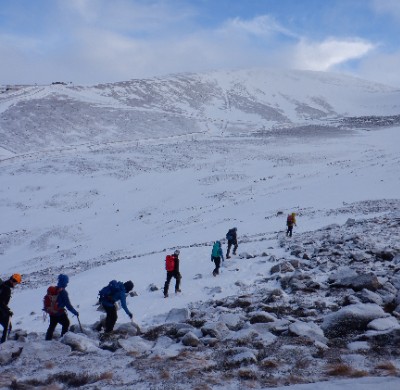
Epic winter adventures are even more fun when you are well prepared and have clothing and equipment suitable for the conditions. If youíre heading out for a short winter hike, you can probably get away with minimal kit, but for longer days it makes sense to be prepared for all eventualities and pack a few extras just in case! And of course youíll need a suitable size rucksack to carry what you need.
Outdoor gear costs, so if youíre new to winter, itís unlikely youíll be able to get fully kitted out in top of the range clothing from the start. Itís worth looking at all the available brands and get the best you can afford, or looking for second hand outdoor clothing and boots online as you build up your winter gear collection. Some outdoor stores hire out winter kit, and that can be an affordable option that also gives you the chance to try a few different brands and find out what suits you best.
Layers
Keep you warm by trapping insulating air between each layer and make it easier to regulate your temperature by removing or adding them as needed.
A synthetic or merino baselayer top (and leggings if needed) will help to wick sweat away from your skin, and you can layer up from there with things like fleece jumpers and jackets, and outer layers. Avoid cotton, which holds on to moisture and keeps you wet, meaning you lose heat quickly and be at risk of hypothermia.
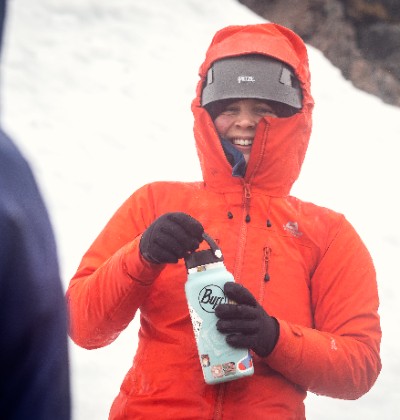
Windproof and waterproof jacket and trousers
Getting wet means getting cold so these will help keep you warm (by stopping the wind stripping off those lovely layers of air around you) and protected from rain or snow.
Hats, gloves and neckwarmer
We lose a lot of heat from these extremities so take a variety of headwear and several pairs of gloves. Numb fingers are no good to anyone! A neckwarmer/buff will keep your neck warm but can also be pulled up over your nose and mouth when itís really cold.
Boots
Winter walking boots (rated B1, B2 or B3) tend to be more rigid and warmer than summer ones, so you can kick steps in snow and use crampons effectively. Speak to your local outdoor retailer for advice or hire some to find out what works for you.
Gaiters
Very effective at keeping your legs and boots dry and warm when walking in snow and rain.
Food and drink
Never underestimate the restorative powers of food and a hot drink on a winter hill day! In winter we use a lot more energy and need more fuel to stay warm, so choose foods that will keep you going and wonít freeze, with a stash of emergency snacks just in case you need a boost. A flask of hot drink will warm you from the inside and canít be beaten (our vote is for hot chocolate!)
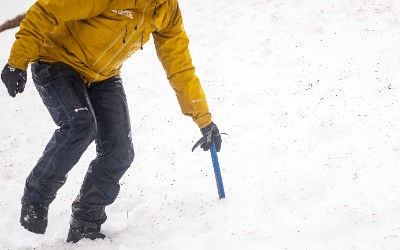
Hard snow and ice is something youíre likely to come across in the Scottish hills in winter (and into spring), so making sure you have good winter boots that fit the right type of crampons is important for moving around safely.
Microspikes are great for icy tracks and flatter ground, but crampons are recommended for anything steep or where the consequences of a slip would be more serious.
Ice axe
You never know when it might come in handy on steep slopes, so always good to have in the mountains. Practice using it to cut steps and stop a slide Ė it could save your life!
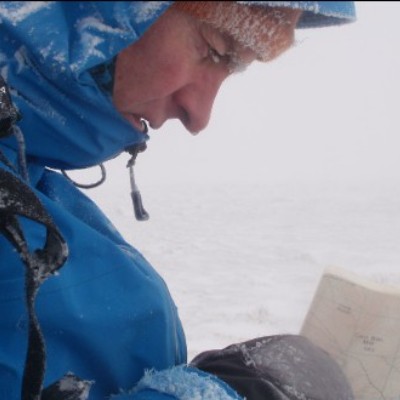
A map and compass is the most reliable means of navigation (assuming you know how to use them), but even a map can blow away or get wet, so a map case attached to your jacket or bag can prevent unfortunate mishaps! If using mobile phone or other electronic device, protect it from the elements in a waterproof case and be aware that the cold can affect battery life, and have a backup or replacement battery to hand. See our SMARTNAV for more tips on using a mobile phone for navigation.
Mobile phone
Useful for navigation (see above) and using apps to find your location, but also for calling for help if needed, so keep your phone warm, dry and charged. If youíre in a group, keep at least one phone switched off for emergency use only, and if you often head out solo, itís worth investing in a cheap pay as you go phone to keep in your rucksack.
Emergency shelter/bag
If you get injured or stuck out in the mountains, you need something to help you shelter from the wind.
A group shelter/bothy bag is great for one or more people to huddle in together (great for lunch breaks too), or a simple emergency survival bag will do for one.
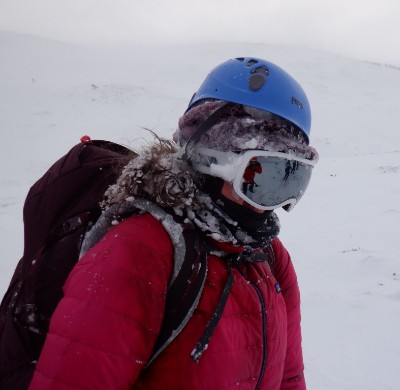
Head torch and whistle
A head torch (plus spare or spare batteries) is essential in winter as itís easy to run out of daylight. Itís also really useful as a way of attracting attention if you need help (especially if youíre stuck and donít have mobile phone signal), as is a whistle Ė six short blasts is the international distress signal.
First aid kit
Hopefully youíll never need it, but when you do, youíll be really glad to have it!
Goggles
When the wind picks up and youíre getting snow blown in your face, youíre going to appreciate a pair of goggles. Clear (non coloured) double lens ones are best so you can see the contour lines on your map/phone well and they wonít steam up.
Dry bags
Really useful to keep different bits of kit together e.g. hat, gloves and neckwarmer or spare layers so they are easier to find and stay dry, even if your rucksack gets wet.
Sunglasses and suncream
Youíll be surprised how often you use these to protect your eyes and skin from reflected glare and avoid the afterglow!